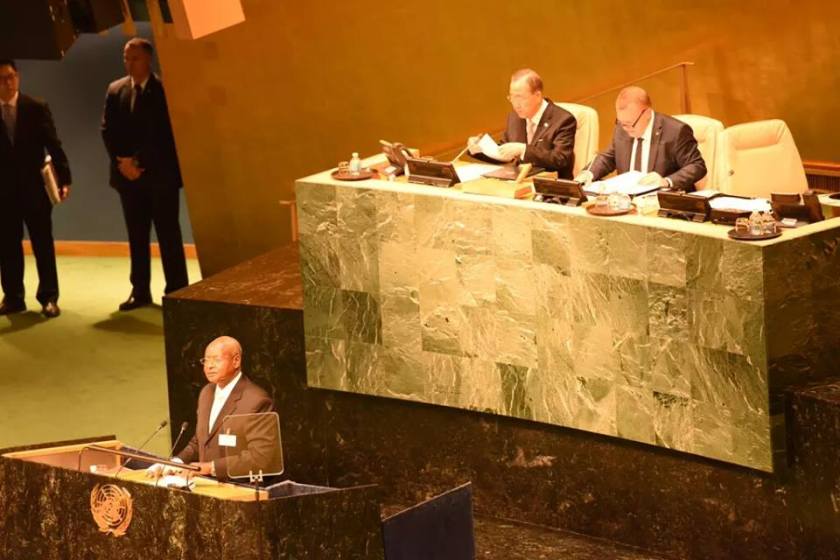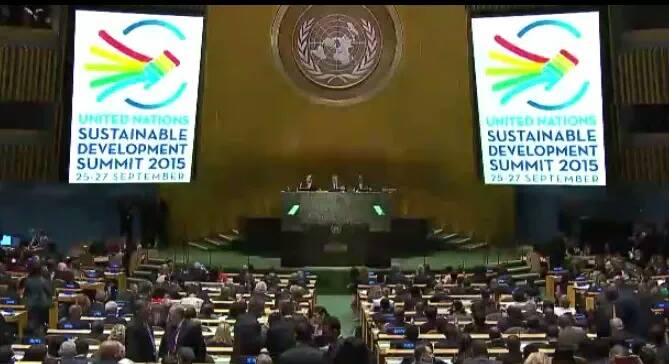
As there been a leak of documents that are addressing the Bilderberg conferences that have been silenced and been a not well-known public affair between the European Government and also the World Affairs, as they have been set invited to discuss the affairs and deal with the present takes of issues.
Like on the Bliderberg Conference of 1954 that we’re on the 29th – 31st May. When the Chairman for the Conference we’re Prince of the Netherlands Prince Bernhard and his Vice-Chairmen we’re John S. Coleman and Paul Van Zeeland. While the same Conference had rapporteurs on the subjects that we’re discussed, these men we’re from USA, Belgium, Netherlands, France and Italy, but half we’re from the United States. Of attenders there we’re from all across Europe, like from Norway came Leif Høegh; UK had a dozen attendees, but the one standout we’re Sir Harry Pilkington; From Germany Rudolf Mueller, Penagiottis Pipenelis from Greece for instance. This proves the importance of the conference as the nations didn’t send some random citizens.
They held the conference in hope for the American that the European Countries could through the NATO partnership have the military arm inside the European Defense Community, while German and French didn’t have faith in or could be part of the EDC. While the unity within unions like Steel and Coal we’re possible, as the sacrifices we’re not feasible, even if the American wished for something more than a European answer, but a Atlantic Pact, that we’re combining the European and American, not only trade, but also Defense. There we’re a general agreement between Europeans at the conference to work against the Soviet propaganda and advantages from the Communists.
One key pieces from the 1954: “The difference between America and Europe with respect to the problem of overseas territories emerged from the discussion as minor by comparison with the areas of agreement. The obvious objective to be sought is an agreed policy of the West to work towards colonial self~government as rapidly and safely as is possible. Such a solution serves the interests of the West and of the dependent peoples. It thwarts the imperialistic interests of Communism”. Second piece: “It was recognised that this conflict sprang largely from the differences in the emotional reactions to the Korean war in America and Europe – differences which it was thought had recently diminished. It was hoped that the negotiations at present taking place on the list of controlled exports would do much to eliminate them”. Third piece: “European unity in some form has long been a Utopian dream, but the conference was agreed that it is now a necessity of our times. Only thus can the free nations of Europe achieve a moral and material strength capable of meeting any threat to their freedom”.
The next conference we’re on the 18th– 20th February 1955 at Barbizon Conference. The Chairman of the Conference we’re H.R.H the Prince of Netherlands. Honorary Secretary we’re J.H. Reitinger and American Secretary Joseph E. Johnson. Interesting people’s attending we’re Sir. Colin Gubbins of United Kingdom, H.J. Heinz of United States and Alberto Pirelli of Italy.

This was the second conference and here is the key issues and quotes from the report: “We had created the North Atlantic Treaty Organisation to oppose Stalinism all Its aspects, but today that Organisation had a very difficult task. Set on foot to meet the possibility of an attaque brusquee it now found itself facing the long struggle of the cold war, perhaps to be prolonged through many decades to come” (…) “Anti-Colonialism: “A European speaker discussed the important psychological aspect of the uncommitted peoples of Asia and Africa, and a number of Latin Americans. He had been very much struck during the last General Assembly of the United Nations by the fact that so much jealousy and resentment was pent up beneath the mostly polished exteriors of representatives of these countries. This was particularly so with the Asians and to a lesser degree there was something of the kind at work in the minds of quite a few South Americans” (…) “There were Asians who, being ardent nationalists and in many cases instrumental in forging the independence of their countries, nevertheless understood the West and all it had to offer to Asia and Africa well enough to interpret it. Names of men like General Romulo sprang to mind, or Sir John Kotelawala” (…) “There was a dangerous tendency on the part of United Nations commissions, after short visits to territories under European tutelage, to recommend periods after which independence should be given. There had been continuous attacks on the Belgian position in Ruanda-Urundi, in East Africa. In this case the Commission had recommended a course which might transform the territory directly from feudalism to “peoples’ democracy”. It must be remembered that the more the Western powers were weakened in Africa the more would their political, economic and even moral powers of resistance to communism be weakened” (…) “The United Nations had entered into the discussion by way of the problem of colonialism. But in terms of the broad relationships between the West and the East the United Nations was an instrument of the greatest importance. It had been said that international law was a generalisation of British foreign policy of the nineteenth century. Whether that was true or not, there was written into the preamble and articles 1 and 2 of the Charter a set of propositions about international order which were entirely congenial to the foreign policies of all who sat there in the room and these had been agreed by sixty governments, including the uncommitted peoples whom we were discussing” (…) “One of Europe’s greatest responsibilities today was to find new formulae for getting over nationalism and in that the speaker agreed with the views of a participant who had suggested that some sort of federation might be the solution. We must find some form, whether it was of federation or of any other juridical term which one might give it, which would be a European-invented by-pass for European-created nationalism”.
The next conference we’re in Garmish-Partenkichen conference at the date 23rd – 25th September 1955. When the same leaders as earlier in the year at the Barbizon Conference as this was a continues effort on the common work. The key things to take from this one we’re this: “The discussion on this subject revealed general support for the idea of European Integration and unification among the participation from the six countries of the European Coal and Steel Community, and a recognition of the urgency of the problem” (…) “The six countries of the Coal and Steel Community had definitely decided to establish a common market and that the experts were now working this out was felt to be a most encouraging step forward and it was hoped that other countries would subsequently join in”.

In 2 Years the next conference happened on St. Simon Island on the 15th – 17th February 1957. Where most of the usual suspects showed up again, when even a Turkish representative Muharrem Nuri Birgi; Jean De La Garde, French and David Rockefeller, United States. The discussion of this conference led to this: “Several speakers urged that patience was essential in the present Suez crisis. Situations like that which developed in Iran in 1951 and was now being repeated in Egypt could not be dealt with in a hurry. A dictator who is impervious to external influences must be allowed to run through his cycle. For a period his personal pride and the demands of his position will render him insusceptible to advice or pressure. The point at which this cycle begins to turn is very delicate and needs careful watching, since a dictator like Nasser might well take desperate measures” (…) “According to the best available estimates, the expansion of oil sales in the years ahead would bring greatly increasing revenues, in fact within the next ten years the oil-producing countries of Iraq, Saudi Arabia, Kuwait, Qatar, and Bahrein should receive 5 billion dollars in oil royalties; yet it was calculated that. over this period they would not be able to spend more than a third of this amount inside their own frontiers. This would leave a surplus of about billion dollars to dispose of” (…) “It might be possible and desirable to change NATO’s present strategic!’ posture and to develop a military organization and doctrine which would free Europe from total . dependence on the threat of massive atomic retaliation. But until or unless this was done the contradictions of our present policy were damaging and dangerous. Because the peoples of NATO did not believe in the possibility of an effective shield against attack, they were reluctant to make the sacrifices required to provide for the forward advance strategy was official doctrine at present”.
The Second conference that year was in Fiuggi, we’re still the usual suspects we’re in control of it and the men behind it. Special names registered at this one we’re Henry A. Kissinger we’re a U.S. Representative and Major-General James Jr. McCormack a U.S. Representative. Key issues and quotes from the Fiuggi we’re this: “Participants from the countries directly involved, however, felt that these fears would prove to be unfounded. The Common Market would be implemented by easy stages and, if the experience of Benelux was any guide, trade With the outside world would increase together with internal trade. They were confident that the Common Market would be a step towards greater freedom in world trade as a whole. This was the purpose of the plan, although in some cases adjustments had had to be made so that particular interests would not be too drastically affected. Now that the internal pattern had been settled in the Common Market Treaty attention would concentrate increasingly on relations with third countries; the Free Trade Area would be the next step in the process of European economic integration” (…) “the main obstacle to British and Scandinavian participation in the Common Market was its function a step towards political union among the countries concerned” (…) “there was also the problem of including agriculture, which for countries like Denmark was of fundamental importance”.

At the 1958 Buxton Conference on the 13th September to 15th September 1958; which was run by the usual suspects yet again. Other representatives worth noticing from this ones we’re E.N. Van Kleefens from the European Coal and Steel Community, Jaques Rueff, European Economic Community (EEC), C.V.R. Schuyler, S.H.A.P.E., Sakari Tuomioja, UN Economic Commission for Europe and Sir. Gordon Archibald of the United Kingdom; other key quotes from this conference are these: “Nationalism could well yield positive results, as was the case in Turkey under Ataturk. It was objectionable, however, when it reached beyond its own borders hurting the interests of others. In such cases we had the right to protect ourselves, and should be firm about it” (…) “The Common Market was due to come into operation on a January 1959, and it was feared that, if no solution were in sight by then, the first appearance of discrimination would produce a schism between the Six and the rest of Europe” (…) “Further the speaker suggested that the Free Trade Area proposals were not the only alternative to the European Economic Community. The notion of association had a technical meaning, and various degrees of rights and obligations were conceivable and could be worked out between the European Economic Community and individual countries on a bilateral basis” (…) “Another major problem facing the European Economic Community was the co-ordination of monetary policies. As one of the participants pointed out, the economic integration of the Six required the co-ordination of all fields of economic policy”.
So there you have it and this is just outtakes, the Soviet problem is a key picture on every single conference, but that isn’t that important now. As the proof of the cold-war and the escalated influence U.S. policy had in Europe. That with their will of a more unified Europe; this being more valid for me, as the proof of the works behind the scenes from the Bliderberg group and their supporters from both United States and Canada; as they even wanted a federal solution to issues between the nation and their integration of monetary and trade-agreements on the continent.
Also the worrying views of Europeans wish to hold-on to their colonies and the liberation of the nations under British and French rule. While the Americans actually wanted a quicker liberation, while they had the worry of Soviet and Communist influence in the new “territories”; the leaked documents really reflect the dominance and arrogance of the Europeans at the time as their paternalistic threshold came under question. Another key we’re the usefulness of NATO and the place of military operations as a countering for peace in Europe, as the fear of Soviet was a reason for the alliance after the Second World War.
Next time I drop on the subject, I will go through the 1960s documents of Bilderberg conferences. To see what else that came up in the next decade. Peace.





















